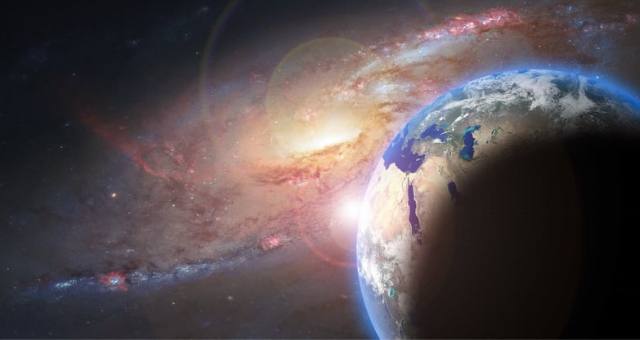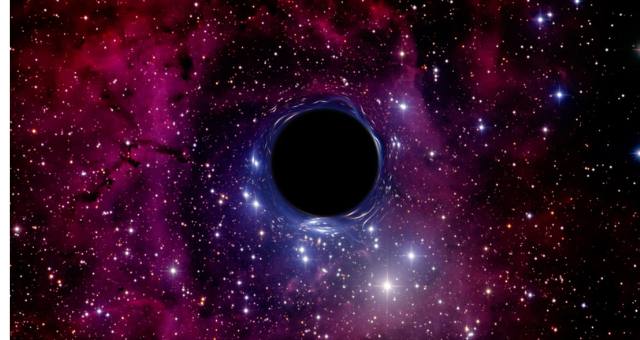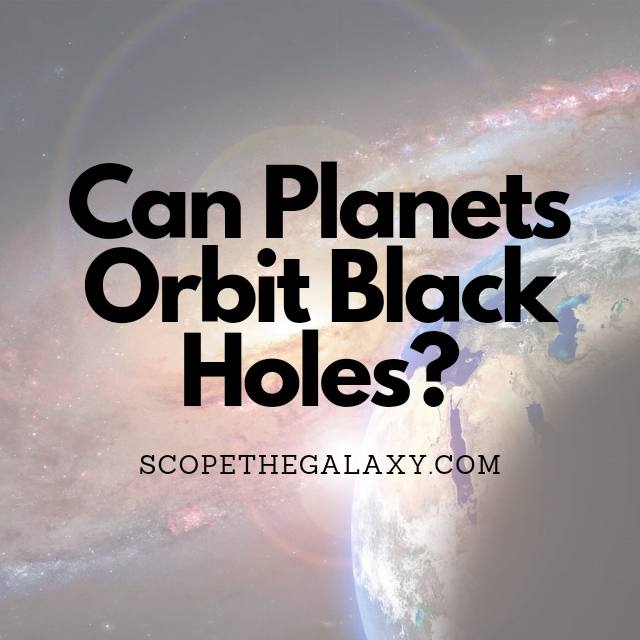*This post may contain affiliate links. This means we may make a commission if you purchase an item using one of our links*
Planets can orbit black holes, just as they can orbit any other large mass in space. However, sustaining life on one of these exoplanets would be challenging without the Sun’s energy, and it would have to exist within particular conditions for the theory to be feasible.
Discover the conditions in which a planet (or even an entire system of planets) could exist within the orbit of a black hole.
How Could A Planet Orbit A Black Hole?
Table of Contents

Many science fiction fans regard Interstellar as the gold standard for the genre, and with an executive producer and Nobel-prize-winning physicist at the helm, it’s not hard to understand why. Kip Thorne vowed that all content within the film would “stem from science” and not violate the physical laws.
Still, in the movie, we see Matthew McConaughy’s character travel through a wormhole to a planet in orbit of a black hole, which seems a little far-fetched.
The premise of this surreal exoplanet, or “blanet” (as a team of researchers at the Kagoshima University would later dub this phenomenon), inspired scientists to try and determine whether this could ever be a reality, and the results are intriguing.
When we think of black holes, many of us picture gigantic space vacuums that suck in everything in view – but that’s not the case. Each black hole has a point known as an “event horizon.” Any matter that crosses that point (including light) will never be able to escape the pull of the black hole’s gravity.
But, beyond the event horizon, an object can orbit a black hole just as it would orbit any other sizable mass.
When Would Planets Not Be Able To Orbit Black Holes?
Perhaps the most potent argument against the idea of black-hole orbiting planets is that no planet could tolerate the creation of a black hole.
These immense masses are the remnants of dying stars, which once exploded in spectacular supernovae. The explosion would have long destroyed any planet within the orbital region of one of these stars. Still, once the black hole is stable, it could theoretically capture planets into its orbit.
The conditions for a black-hole orbiting planet are specific, and there are an infinite number of times when planets would not be able to orbit black holes.
First off, the black hole has to be big – really big. Why? Because small black holes tend to rip apart stars and planets as they near the mass. In contrast, larger black holes don’t create tidal disruption until an object has passed its event horizon. For this reason, the black hole would need a minimum mass of 163 million times that of our Sun.
Secondly, the planet would need to orbit closely to gain enough energy to sustain it. But this close orbit would likely lead to the planet crossing the event horizon and disappearing into a black hole.
Still, research shows that close stable orbits are possible so long as the black hole is spinning fast enough. That means the black hole has to turn with a margin no greater than 100 millionth of a percent less than light speed.
Finally, a planet couldn’t sustain an orbit around a black hole crowded by space debris. Instead, the planet must exist in a “tranquil galactic center” (or empty space). Otherwise, when stray matter crossed the event horizon and entered the black hole, it would emit a radiation blast that was powerful enough to kill any lifeform on the planet.
How Many Planets Can Orbit A Black Hole?

Research by the astrophysicist, Sean Raymond, suggests that (in theory, at least) up to one million planets could orbit a black hole. However, this would be the extreme end of the scale.
One reason why a black hole could potentially support far more planets than a Sun is down to its immense gravitational pull. For our Sun, roughly six Earth-mass planets can fit within the habitable zone while maintaining a stable mass. If the planets were any more concentrated, their gravity would affect the orbital path of the surrounding planets.
Still, thanks to the immense gravitational pull of a black hole, the planet’s influential pull would be easy to overcome. And a million-solar-mass black hole could fit 550 Earth-mass planets within stable concentric orbits.
Raymond’s theory also incorporates the idea of creating and widening the habitable zone of a black hole by placing a ring of suns between it and the orbiting planets. Theoretically, the possibilities are endless and could support a complex civilization.
Could Earth Orbit A Black Hole?
While it’s possible that a planet could orbit a black hole, it would be a significantly different world than Earth.
The first problem for a life-sustaining planet would be the need for a usable energy source. Here on Earth, we use the Sun’s light and heat to maintain liquid water, farm, grow food, and so on.
But if Earth orbited a black hole, our bright center of life would be replaced with a black hole that filled almost 50% of our sky and a “pseudo sun” created by the concentration of leftover photons.
Additionally, each world needs somewhere for unusable waste heat to dissipate, which for us is a cold, vast array of space.
Interstellar poses the idea that for a planet orbiting a black hole, the energy givers and takers could be reversed; the “Sun” would be a cold hole, ideal for sucking in excess heat, and “space” could provide a heat source.
Research backs this idea in the form of the CMB – or cosmic microwave background – that permeates through space. While this leftover energy from the big bang is weak and only a few degrees above absolute zero, there might be a way for it to generate more power.
Suppose an orbiting planet was in the right location. In that case, it could enjoy the effects of the extreme gravity created by a black hole squashing the radiation into optical wavelengths, concentrating the energy, and funneling it into a narrow beam.
In this instance, the cosmic microwave background would appear as a star and could provide energy for a planet.
Summary
Scientists track planets by observing the shadows they create when they pass in front of their star. That’s why it’s tough for scientists to say conclusively whether a black-hole orbiting planet could exist – there is nothing for us to observe (how can a planet cast a shadow on a black background?)
Still, movies such as Interstellar pique the interest of scientists around the world, inspiring them to construct theories of how these bizarre worlds could really exist.
References
Could a habitable planet orbit a black hole? | Science | AAAS
1 Million Habitable Planets Could (Theoretically) Orbit a Black Hole. Here’s How | space
Could a habitable planet orbit a supermassive black hole? | MIT Technology Review

